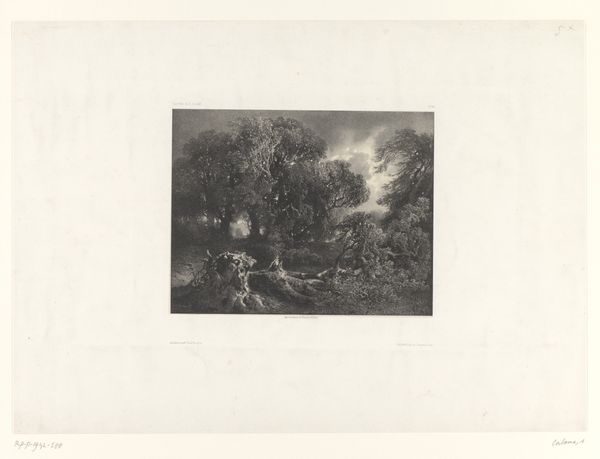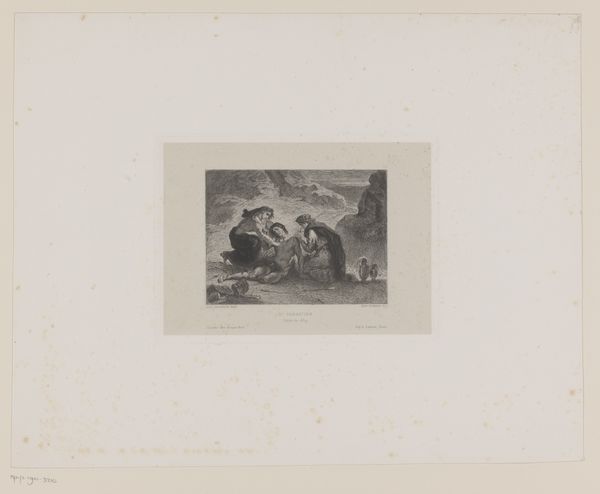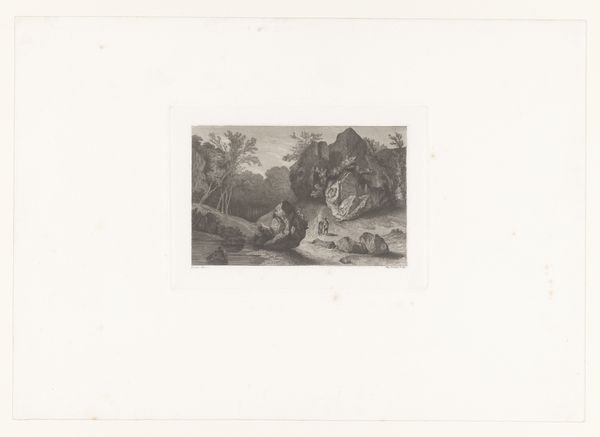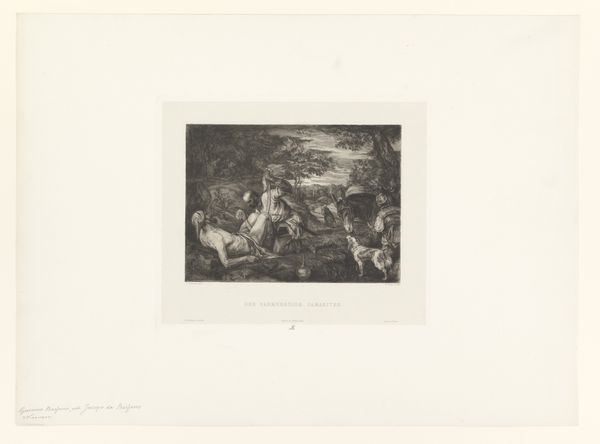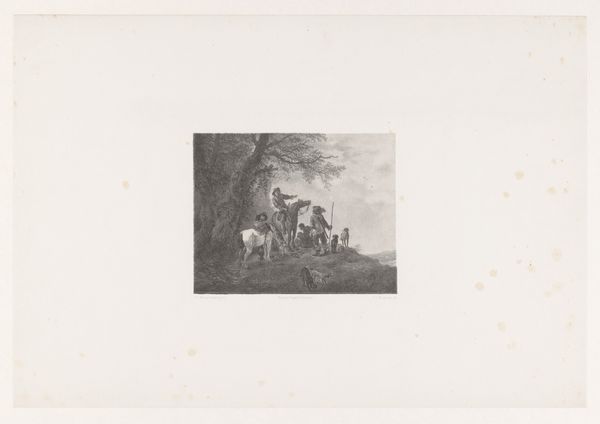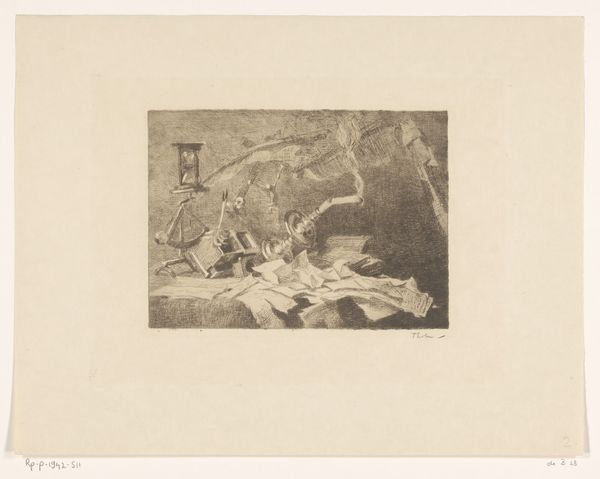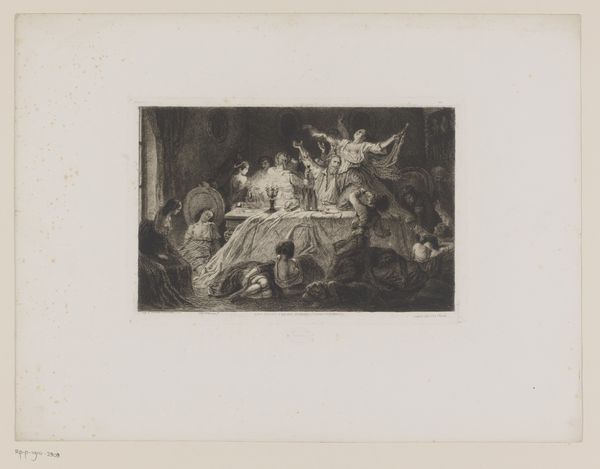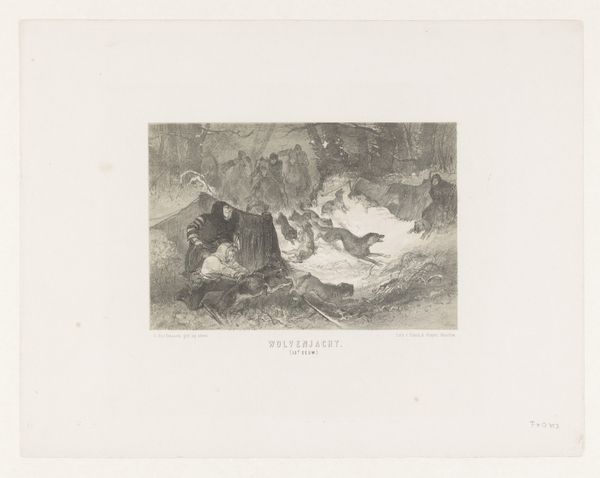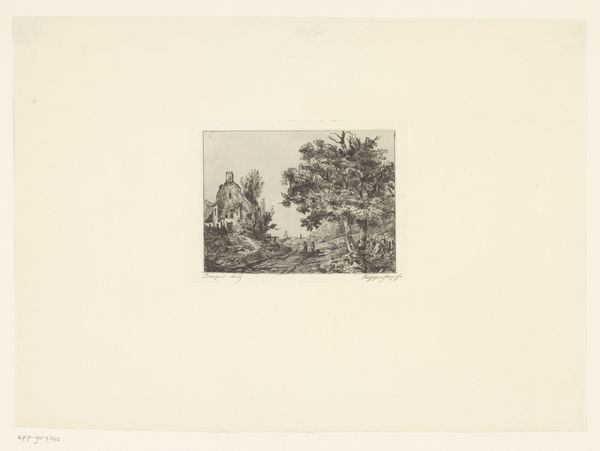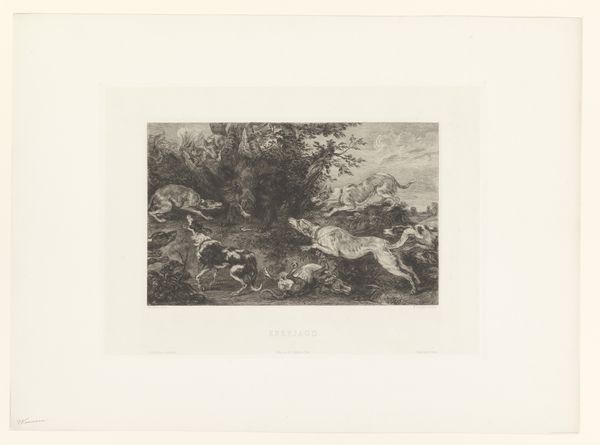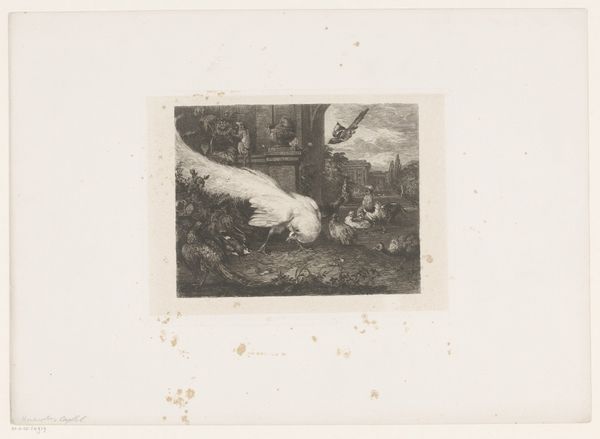
Dimensions: height 260 mm, width 397 mm
Copyright: Rijks Museum: Open Domain
Curator: At first glance, it feels like a forgotten feast, or perhaps a hunter's bounty laid out…slightly unsettling. Editor: We're looking at "Stilleven van bloemen, vruchten en wild," a still life etching on paper created around 1870 by Paul Emile Nicolie, currently held at the Rijksmuseum. Curator: "Still life"... seems a bit of a euphemism considering the 'wild' element includes what appears to be a deceased hare! The romantic style adds to the drama, like a stage set. What strikes me most is the symbolic weight – the flowers juxtaposed with the dead game, beauty with mortality. It's a traditional vanitas motif, I think. Editor: Absolutely, the arrangement echoes centuries of symbolic language. The wilting flowers, the ripe fruit... all hinting at the ephemeral nature of beauty and life itself. But I wonder if the inclusion of wild game introduces another layer. There's a certain brutality alongside the elegance. Do you think that introduces a comment on humanity’s role? Curator: Precisely! Hunting, a traditional privilege of nobility, is implicated in this grand symbolic theatre. This speaks to the Romantic period and it´s concern with themes like our troubled relation with nature or social inequalities. But I'm equally captivated by the etching technique. The precision, the delicate lines. Editor: There is something undeniably refined about the method itself, offering a tension against the artwork's subject. Perhaps that contrast elevates it past mere morbidity – the technical execution almost redeems the morbid elements by transmuting decay into meticulously detailed beauty? A captivating piece on many levels. Curator: Indeed, from the individual elements of decay to the commentary on the relationship of life, nobility, and nature this print holds a lot more to unravel than one would think from its presentation! Editor: True; this reminds us how artistic expression, even through familiar imagery, carries on prompting diverse contemplations about life’s fleeting nature.
Comments
No comments
Be the first to comment and join the conversation on the ultimate creative platform.
